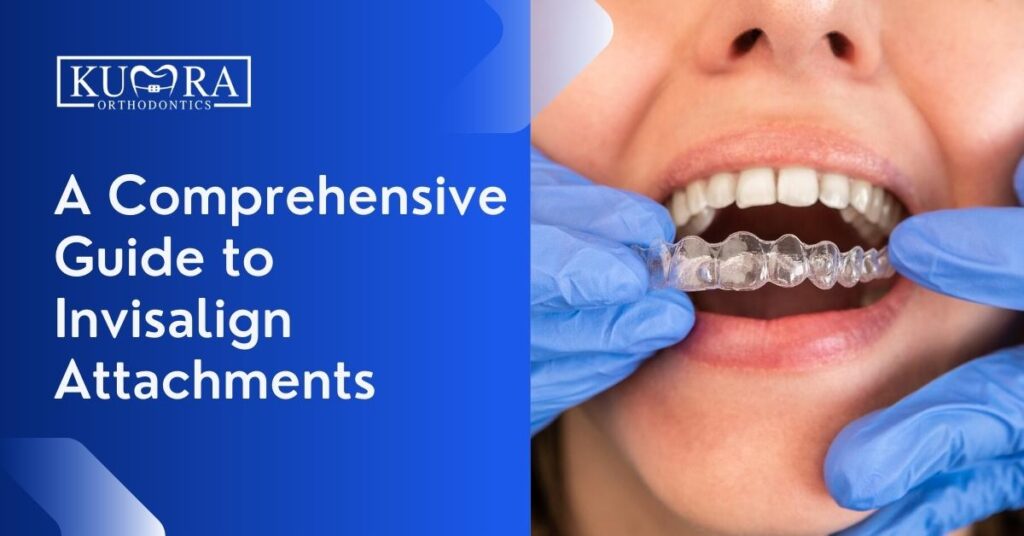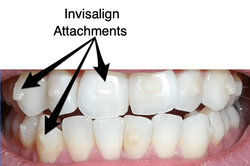Invisalign vs. Conventional Dental braces: Which Choice Is Right for You?
When thinking about orthodontic therapy, the selection between Invisalign and typical braces offers a number of vital elements that merit mindful examination. Invisalign offers a discreet alternative with detachable aligners, while typical dental braces offer an extra visible yet effective service for extreme misalignment. Each alternative incorporates distinctive benefits and drawbacks associated with aesthetics, convenience, therapy period, and expense. Recognizing these subtleties is critical for making an informed decision that aligns with your individual choices and way of living. The inquiry remains: which alternative will ideal fulfill your orthodontic demands and assumptions?
Summary of Treatment Alternatives

In contrast, traditional dental braces consist of steel braces and wires that are bound to the teeth. This approach applies constant stress in time to attain alignment. While efficient for intricate orthodontic concerns, conventional dental braces call for regular brows through for adjustments and can position obstacles in keeping oral hygiene because of the trouble of cleansing around cables and braces.
Both alternatives have their merits, and the choice typically pivots on details oral conditions, lifestyle preferences, and client conformity. Eventually, getting in touch with an orthodontic professional is essential for figuring out one of the most suitable treatment plan tailored to individual needs. Comprehending the nuances of each choice can substantially affect the total success of orthodontic treatment.
Visual Factors To Consider
A significant factor influencing the choice between Invisalign and conventional braces is the aesthetic appeal each treatment provides. Invisalign aligners are crafted from clear plastic, making them practically undetectable when used. This very discreet appearance is especially attracting adults and teenagers that may feel awkward concerning their orthodontic therapy. The capacity to preserve a natural smile throughout the positioning process can considerably improve the individual's self-confidence in expert and social settings.
In comparison, traditional dental braces include steel brackets and wires, which can be much more noticeable. While innovations in orthodontic innovation have actually resulted in the development of smaller braces and colored elastics, typical braces still keep a more obvious profile. For some people, the visibility of braces might discourage them from looking for required therapy.
Ultimately, the option in between Invisalign and conventional dental braces may rest on individual preferences relating to looks. Patients who focus on discretion typically favor Invisalign, while those who are less worried concerning visibility might decide for traditional braces. Recognizing the aesthetic ramifications of each choice is crucial for making a notified choice that straightens with one's lifestyle and preferences.
Comfort and Convenience

In terms of convenience, Invisalign aligners are detachable, making it possible for individuals to enjoy their favorite foods without constraint and keep ideal oral health. Cleaning and flossing are simplified, as the aligners can be obtained throughout these routines, whereas traditional dental braces need careful maneuvering around brackets and wires.
Additionally, Invisalign's dynamic system enables fewer orthodontic brows through. Individuals typically obtain several sets of aligners simultaneously, which can improve the treatment procedure and reduce time invested in the orthodontist's chair. In contrast, typical braces necessitate routine adjustments, making them much less convenient for those with active schedules. Invisalign. On the whole, the comfort and ease of Invisalign make it an attractive selection for numerous people seeking orthodontic therapy.
Treatment Period and Performance
While both Invisalign and conventional dental braces are effective in fixing oral imbalances, the duration of treatment can differ significantly between the two alternatives. Typically, Invisalign treatment can take anywhere from 12 to 18 months, depending upon the intricacy of the case. The clear aligners work by slowly changing teeth right into their desired placements, and regular follow-ups with an orthodontist help guarantee development continues to be on course.
On the other hand, conventional braces usually require a longer commitment, typically ranging from 18 months to three years. This is because of their set nature and the usage of braces and wires, which can be a lot more efficient for severe misalignments and intricate cases (Invisalign). The treatment performance of traditional dental braces is well-documented, as they permit specific changes and better control over tooth motion
Inevitably, the selection between Invisalign and traditional dental braces might hinge on both the anticipated treatment duration and the specific oral concerns available. Consulting with an orthodontist is critical, as they can give customized suggestions based on individual demands, ensuring the picked approach lines up with desired outcomes and durations.
Cost Contrast and Insurance Coverage Options
Cost plays a substantial function in the decision-making process for people thinking about orthodontic treatment, whether going with Invisalign or typical braces. On average, the price of Invisalign varieties from $3,000 to $8,000, while traditional dental braces usually cost in between $2,000 and $6,000. Elements affecting these expenses include the intricacy of the case, the period of treatment, and geographical area.
Insurance policy protection can dramatically affect out-of-pocket expenses. reference Lots of dental insurance policy plans give partial protection for orthodontic therapies, but the specifics can differ widely. It is critical for clients to assess their insurance coverage plans to identify the level of insurance coverage for either choice. Usually, conventional dental braces might be much more regularly covered by insurance plans contrasted to Invisalign, which some insurance providers classify as a cosmetic procedure.
Furthermore, numerous orthodontic techniques offer flexible layaway plan, making both therapy alternatives extra accessible. Clients ought to ask about possible funding alternatives and price cuts for ahead of time repayments. Examining the complete expense, including insurance benefits and layaway plan, is essential for making an informed decision that aligns with both aesthetic choices and spending plan factors to consider.

Conclusion
In summary, the choice in between Invisalign and traditional read review braces rests on numerous variables, consisting of visual choices, comfort, treatment duration, and cost. Invisalign offers a very discreet, detachable alternative that promotes dental health and dietary flexibility, while conventional braces might be extra appropriate for complicated dental issues and often come with a reduced cost point. Inevitably, appointment with an orthodontist is vital to examine private circumstances and determine one of the most proper treatment alternative for accomplishing ideal oral click to investigate positioning.
When thinking about orthodontic treatment, the selection between Invisalign and traditional dental braces presents numerous crucial elements that warrant cautious evaluation.Contrasting Invisalign and conventional braces exposes distinct therapy options for orthodontic improvement.While both Invisalign and conventional dental braces are efficient in correcting oral misalignments, the period of treatment can vary significantly in between the two choices.Cost plays a considerable role in the decision-making process for people thinking about orthodontic therapy, whether opting for Invisalign or standard braces.In summary, the selection between Invisalign and standard dental braces hinges on several variables, including visual choices, comfort, treatment period, and cost.